Yellow
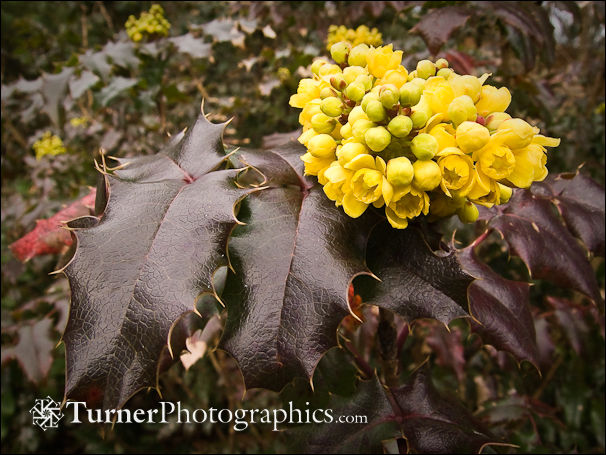
It’s January 19 and spring is starting to pop. We’ve had several warm days recently, with high temperatures around 50 and some mixed sun and rain. On my walk to the post office this afternoon to mail a couple of fine art prints to customers I perambulated along the Whatcom Creek trail and spied these bright yellow blossoms.
Shining Oregon-grape, Mahonia aquifolium, is one of our two native members of the genus here in Bellingham. It’s the earliest to bloom, although not as early as some of the garden Mahonias with even bigger and more spectacular flower clusters. The leaves sometimes take a beating when we have really cold days, but they’ll be replaced with fresh foliage when spring really arrives later on.
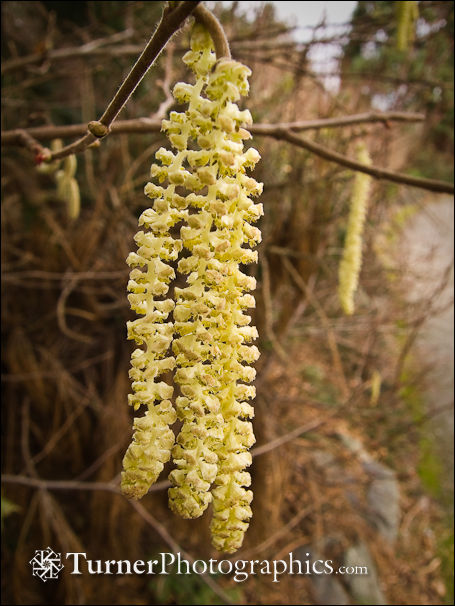 Hazelnuts, aka Common Filberts, also bloom very early in the spring. Well, maybe it is still officially winter. This is the non-native Corylus avellana. It is cultivated commercially around here, but has also naturalized into the wild all over the place.
Hazelnuts, aka Common Filberts, also bloom very early in the spring. Well, maybe it is still officially winter. This is the non-native Corylus avellana. It is cultivated commercially around here, but has also naturalized into the wild all over the place.
Common Filbert is hard to distinguish from Beaked Filbert, our native species, unless you catch them in fruit. But Common Filbert starts blooming in December and Beaked Filbert doesn’t usually get going until March. For more details on distinguishing them see Botanical Electronic News #389 and scroll down to a comparative table.
Both Filberts bear separate male and female flowers on the same plant. What you’re seeing here are the male flowers, full of pollen. The female flowers are tiny and look like little red bristles. You might not even see them unless you’re looking for them.
I made both of these photographs with my Canon S70 pocket camera, shooting RAW. It can be a little tricky to get the autofocus to make the part of the photo you want to be sharp actually in focus. I used the camera’s macro mode, set by the button with the little tulip symbol, and the lens zoomed all the way out. That’s the standard way to do closeups with most pocket cameras. The trick is to “steer” the autofocus point. On the Canon I pressed the SET button and then used the direction buttons around it to move the focus point (the green box) to my main subject. It takes a little practice to get the hang of it.
Because I was working so close, I couldn’t really put my subject in the center, focus, and then reframe because the distance to the lens would change and I’d lose sharpness. I was in aperture priority mode and stopped down to f/6.3 for these if I remember correctly. For the Hazelnut I hold onto the branch and the camera together to keep the distance from changing in the breeze.
Both of these photos have had a little processing in Adobe Lightroom.
Now that stuff is starting to bloom, all you flower nuts need to get out and start shooting. OK, you don’t really need blossoms for creative images as my friend David Perry points out on his blog and Facebook page. Or maybe you’re just drooling over little green blades of crocus like Mary Ann Newcomer over in Boise. Just find some inspiration and go to it.
Oh yeah, that fancy word in the first paragraph was the word of the day for January 19 at thesaurus.com. Perambulate sounds so much nicer than plain old walking.


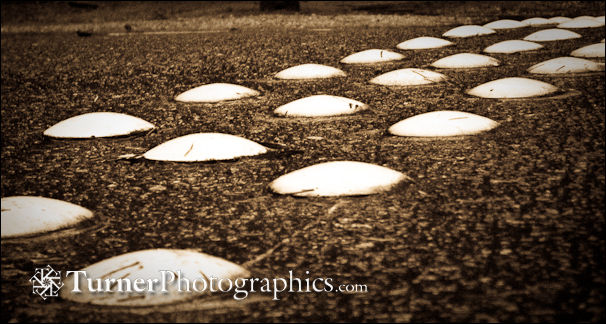

 Just a block up the street from us is the First Plymouth Congregational Church. This patch of heather has been part of their garden for about as long as we’ve been in Bellingham — 19 years. It’s come into full bloom in the last week or so and will continue to be in bloom for at least a couple of months.
Just a block up the street from us is the First Plymouth Congregational Church. This patch of heather has been part of their garden for about as long as we’ve been in Bellingham — 19 years. It’s come into full bloom in the last week or so and will continue to be in bloom for at least a couple of months.
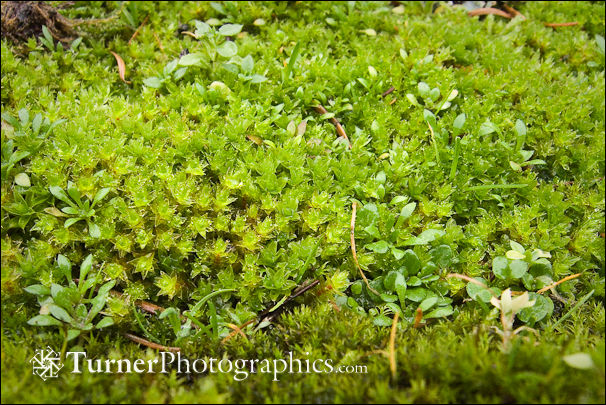
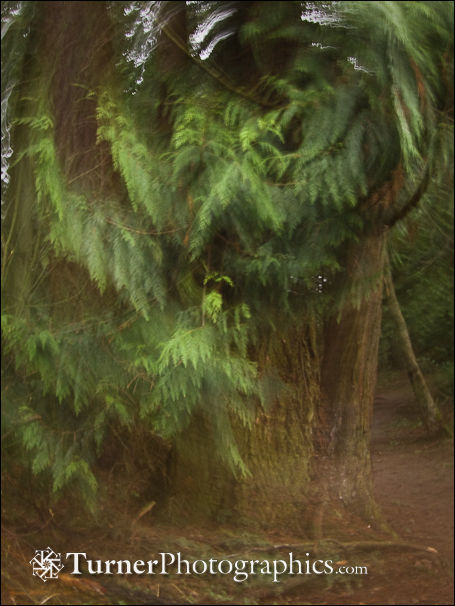 My favorite trail through the park has many old trees. They may not be true old-growth, but they’re certainly approaching it in size and majesty. Mostly they’re Douglas-firs and Western Red-cedars. This one is a cedar.
My favorite trail through the park has many old trees. They may not be true old-growth, but they’re certainly approaching it in size and majesty. Mostly they’re Douglas-firs and Western Red-cedars. This one is a cedar.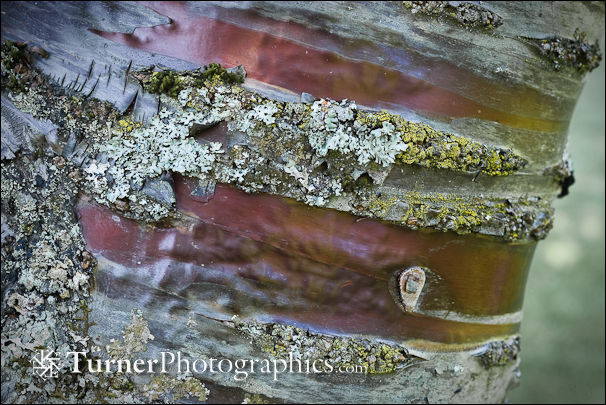
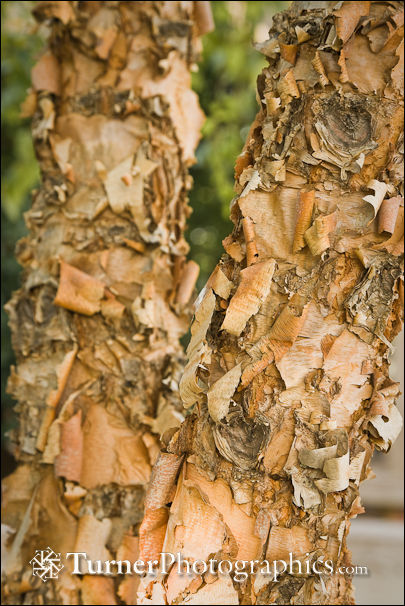 Some of the most interesting bark peels dramatically, like this river birch (Betula nigra) growing in the garden at Oklahoma State University in Oklahoma City.
Some of the most interesting bark peels dramatically, like this river birch (Betula nigra) growing in the garden at Oklahoma State University in Oklahoma City.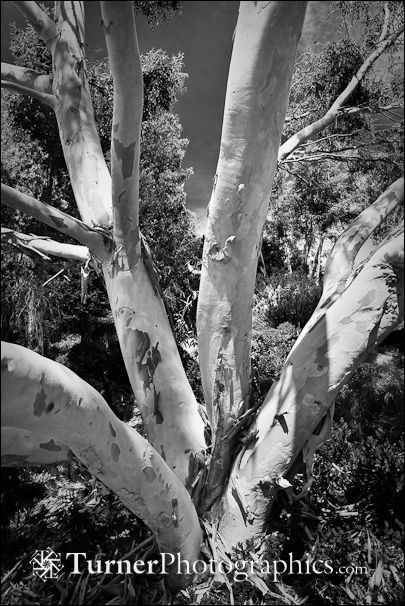 Trees with interesting bark aren’t just limited to North American natives. This Tasmanian Snowgum (Eucalyptus coccifera), was planted as a dramatic ornamental in the alpine garden at the
Trees with interesting bark aren’t just limited to North American natives. This Tasmanian Snowgum (Eucalyptus coccifera), was planted as a dramatic ornamental in the alpine garden at the 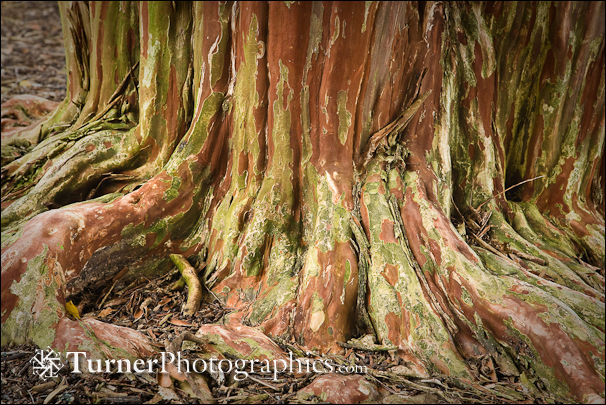
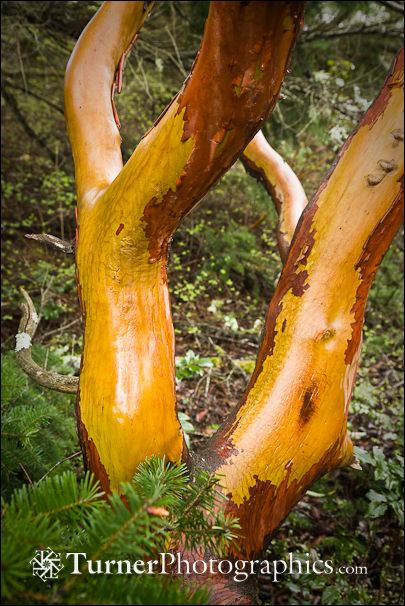 Here in the Northwest one of my favorite trees for winter bark is the Madrona, sometimes called Madrone, or Arbutus menziesii. This one was photographed on a rainy day on Pass Island at Deception Pass State Park in early March. The soft light and the rain really enhance the color of the bark and the wood where it’s peeled away.
Here in the Northwest one of my favorite trees for winter bark is the Madrona, sometimes called Madrone, or Arbutus menziesii. This one was photographed on a rainy day on Pass Island at Deception Pass State Park in early March. The soft light and the rain really enhance the color of the bark and the wood where it’s peeled away.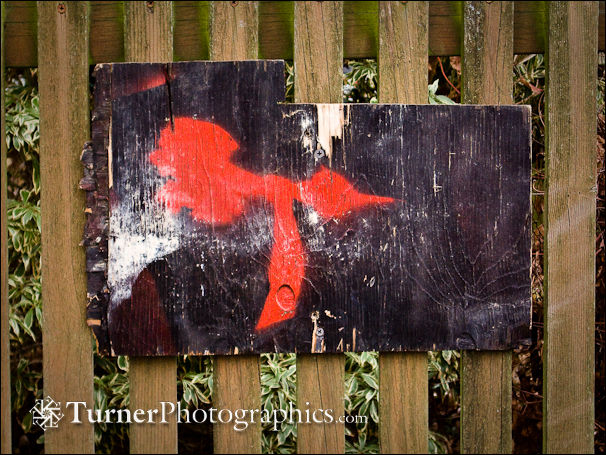
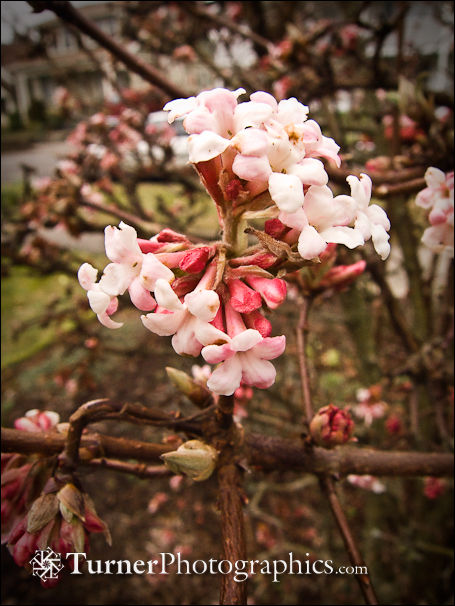 This being the mild Pacific Northwest we gardeners sometimes joke that spring begins on New Year’s Day. We try to have something blooming in our garden year-around and today is no exception. What’s blooming in your garden today?
This being the mild Pacific Northwest we gardeners sometimes joke that spring begins on New Year’s Day. We try to have something blooming in our garden year-around and today is no exception. What’s blooming in your garden today?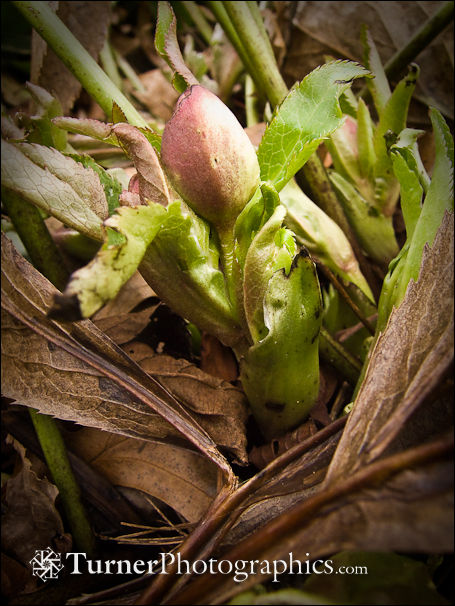 We’ve got a nice patch of Hellebores growing under the Dawn Viburnum. They haven’t started blooming yet, but the flower buds are swelling. Depending on how warm January turns out to be, they could be starting to open before the month is over.
We’ve got a nice patch of Hellebores growing under the Dawn Viburnum. They haven’t started blooming yet, but the flower buds are swelling. Depending on how warm January turns out to be, they could be starting to open before the month is over.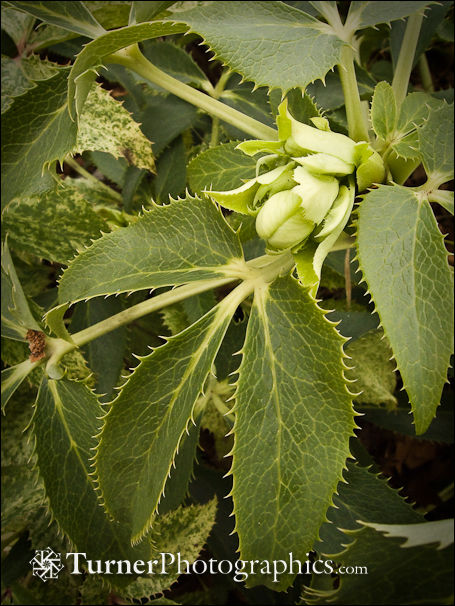 Over on the other side of our front yard garden, nestled close by the Korean Fir that serves as our Christmas tree, is a big clump of Corsican Hellebores, Helleborus argutifolius.
Over on the other side of our front yard garden, nestled close by the Korean Fir that serves as our Christmas tree, is a big clump of Corsican Hellebores, Helleborus argutifolius.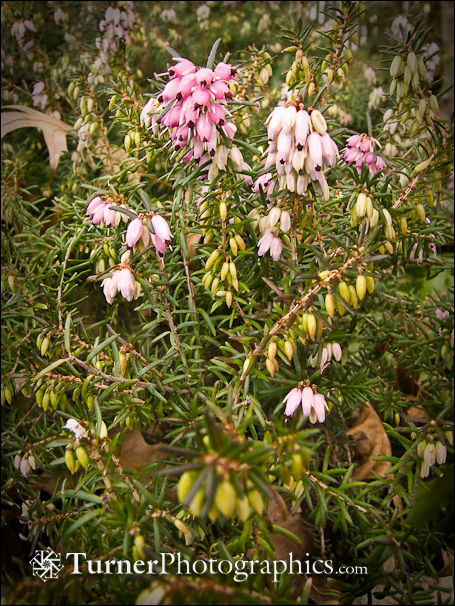 We have several varieties of Heather scattered around our garden. This one I think is ‘Sherwood’s Early Red.’ Like many other plants we started with just a little start years ago and have divided it as it grew. Now we have it several places in the garden and have shared pieces with Natalie’s mother for her garden, too.
We have several varieties of Heather scattered around our garden. This one I think is ‘Sherwood’s Early Red.’ Like many other plants we started with just a little start years ago and have divided it as it grew. Now we have it several places in the garden and have shared pieces with Natalie’s mother for her garden, too. Santa Claus took a little time out of his busy schedule to come into the studio for a fresh portrait a little while back. While he and Mrs. Claus were in, we talked a bit about some of the questions that children frequently ask him. He was gracious to share his answers.
Santa Claus took a little time out of his busy schedule to come into the studio for a fresh portrait a little while back. While he and Mrs. Claus were in, we talked a bit about some of the questions that children frequently ask him. He was gracious to share his answers.
 Q: Do you really live at the North Pole? I thought it was all ice up there and dark all winter long.
Q: Do you really live at the North Pole? I thought it was all ice up there and dark all winter long.
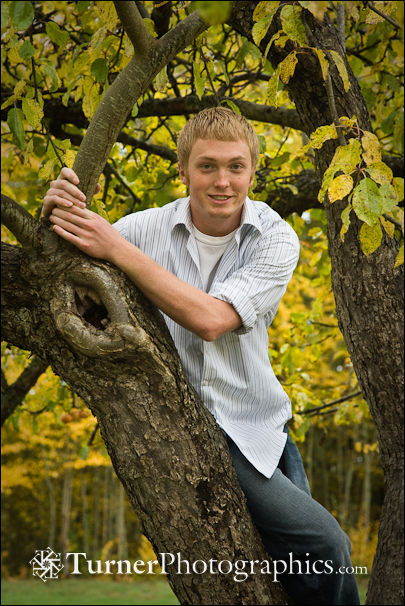 It was actually raining when I arrived, so we started with a few interior shots with Chris at the piano. He wasn’t too keen on those, but we wanted to make mom happy. When the rain stopped we moved outside and began working our way around the garden.
It was actually raining when I arrived, so we started with a few interior shots with Chris at the piano. He wasn’t too keen on those, but we wanted to make mom happy. When the rain stopped we moved outside and began working our way around the garden.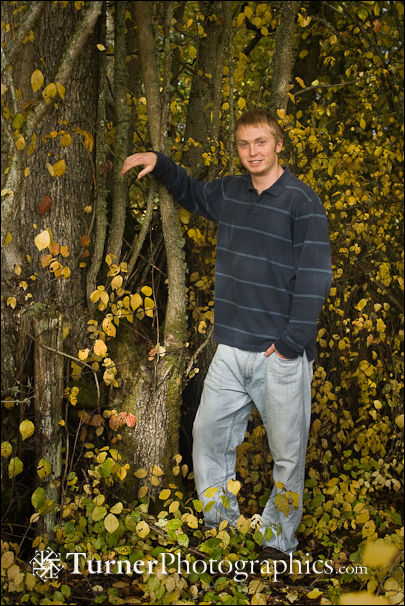 This portrait of Chris at the edge of the woods is the one everyone ultimately liked the best and ordered as a small wall portrait. He looks relaxed and comfortable, and the golden yellow autumn foliage contrasts nicely with the blue sweater and jeans.
This portrait of Chris at the edge of the woods is the one everyone ultimately liked the best and ordered as a small wall portrait. He looks relaxed and comfortable, and the golden yellow autumn foliage contrasts nicely with the blue sweater and jeans.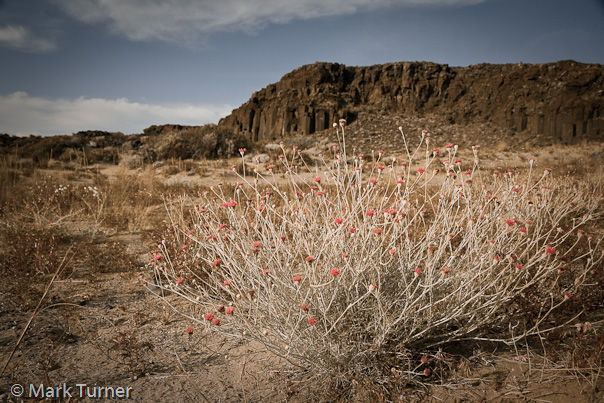
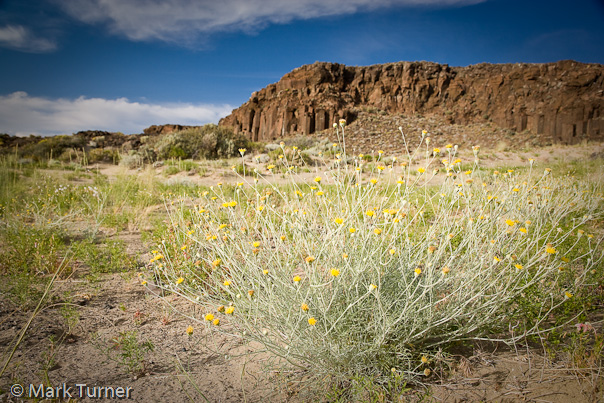
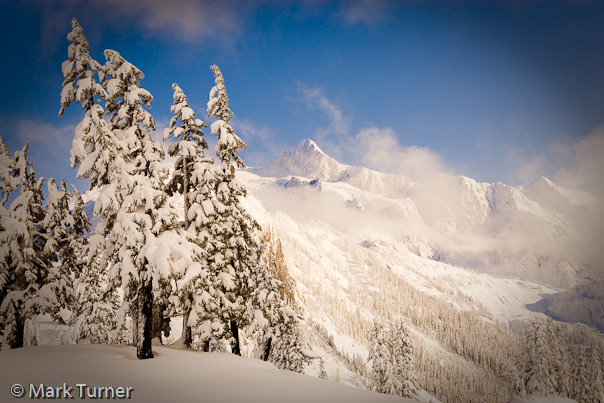
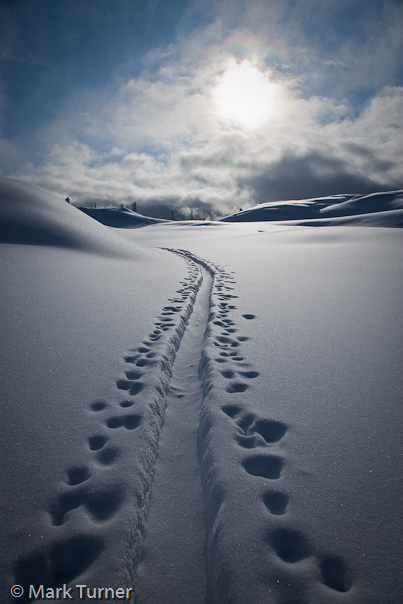 I didn’t get to the ski area parking lot, which was full, until almost 12:30. That was OK since I wanted afternoon light. But it wasn’t OK, because I was racing the clouds that had started to roll in.
I didn’t get to the ski area parking lot, which was full, until almost 12:30. That was OK since I wanted afternoon light. But it wasn’t OK, because I was racing the clouds that had started to roll in.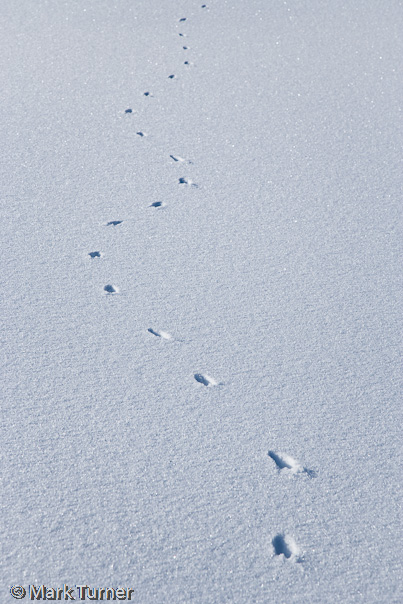 I don’t know just what made these tracks zig zagging across the snow. Could have been a meadow vole or other small rodent that dens under the snow. There were several sets of tracks similar to these in the snow just below Artist Point. I particularly liked this set of tracks because of the way they curved around. What distracted the critter from a straight path?
I don’t know just what made these tracks zig zagging across the snow. Could have been a meadow vole or other small rodent that dens under the snow. There were several sets of tracks similar to these in the snow just below Artist Point. I particularly liked this set of tracks because of the way they curved around. What distracted the critter from a straight path?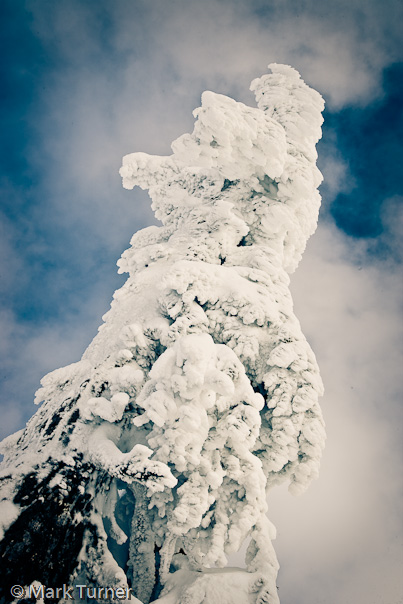 I broke trail the short distance to the overlook toward Swift Creek and Baker Lake. Clouds obscured the lake as well as Mt. Baker, but the snow crusted on the Mountain Hemlocks along the ridge created more accessible drama. I ate my peanut butter sandwich under this tree, admiring the way the wind had blasted the snow into the branches, almost completely hiding the foliage.
I broke trail the short distance to the overlook toward Swift Creek and Baker Lake. Clouds obscured the lake as well as Mt. Baker, but the snow crusted on the Mountain Hemlocks along the ridge created more accessible drama. I ate my peanut butter sandwich under this tree, admiring the way the wind had blasted the snow into the branches, almost completely hiding the foliage.